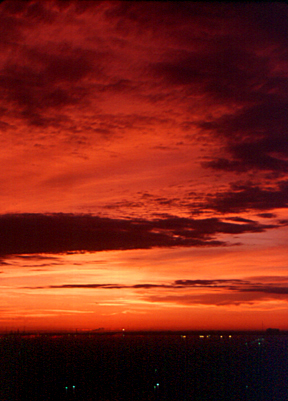Why does the Sun's activity vary?
Interview with
The Met Office is working to compile the best possible observations of what the Sun is  doing, in order to make predictions of when the Earth may face a particularly strong battering from the solar wind.
doing, in order to make predictions of when the Earth may face a particularly strong battering from the solar wind.
But elsewhere, scientists are working to understand why the Sun's activity varies, in order to form even better long-term predictions of how the Sun is going to behave in years to come.
One of those researchers is Lucie Green from University College London, who spoke to Dominic Ford.
Dominic - Now, Lucie, on the surface, the sun seems a very simple object. It's a ball of gas. It doesn't have solids and liquids on its surface. Why is it so difficult to understand?
Lucie - Well, it is a very complex object and I think that's something that's really become apparent to us over the recent decades. So, in particular with the advent of the space era which enabled us to put telescopes into space above the Earth's atmosphere and really showed the sun in all its glory. So, prior to the space age, we were viewing the sun just using, well mostly, using visible light. So, the wavelength that our eyes detect and if you filter or project an image of the sun, you see sun spots. But when we went into space and we started to see the short wavelength, the high energy radiation coming from the sun which we detected for the first time, the sun revealed itself to be this very complex object which is seething with hot gases or hot plasma - an electrically charged gas, but also magnetic fields. I think that really showed a level of complexity that we've been having to try and understand ever since.
Dominic - You've hinted there about the unique challenges of observing the sun. Astronomers spend a lot of their time looking at incredibly faint things in the night sky at incredible distances. The sun isn't like other objects that astronomers study, is it?
Lucie - No, we are not short of photons. We are not short of light to study. That's absolutely correct, but in a sense, we're lucky with the amount of light we receive from the sun and we're lucky that we can spatially resolve our local star. We can see the details on its surface and in its atmosphere. But that again, it adds into this level of complexity that makes the sun such a challenging object to understand. We see it varying second by second and we see it varying on very, very small size scales. Each time we build a bigger telescope that can see more detail on the sun, we have more questions to answer and that makes it very challenging.
Dominic - You mentioned there, sunspots. How are those connected to these explosions of plasma that might get sent out towards the Earth and cause problems for satellites?
Lucie - Sunspots are really fascinating features. So, first of all, we saw them as these dark spots on the surface of the sun and for, well, several hundred years they were drawn, they were counted, and they were followed on the sun. But then in 1908, an American astronomer, George Ellery Hale, built an instrument that detected the true nature of sunspots and he realised that they are strong sources of magnetic field, very, very concentrated strong magnetic fields on the surface of the sun. But these magnetic fields emanate up into the atmosphere and really, that discovery was the birth of solar physics because then we became able to understand how the sun is energised really because these magnetic fields, and this has got sort of an alien concept I think really, these magnetic fields that emanate out from the sunspots are able to store energy. When that energy gets released, it gets transformed from magnetic energy into light or particle accelerations and heating of the gases. When that happens, you get the forms of solar activity that we've mentioned already. So, solar flares happen when magnetic energy gets transformed into visible light, ultraviolet light, x-rays, and so on. Coronal mass ejections happen when this magnetic energy gets transformed into the kinetic energy of the motion of plasma out into the solar system.










Comments
Add a comment